Humans have been using ceramic tiles to build and decorate their living spaces since the dawn of civilization. Since then, they’ve developed from basic coloured sun-dried bricks to delicately designed ornaments that can reflect a nation’s (or even a continent’s) entire history.
And now you can go on a global ceramics tour thanks to the team from home design specialist QS Supplies. Using data from Pinterest and Dreamstime, they created several world maps highlighting each country’s signature tile design.
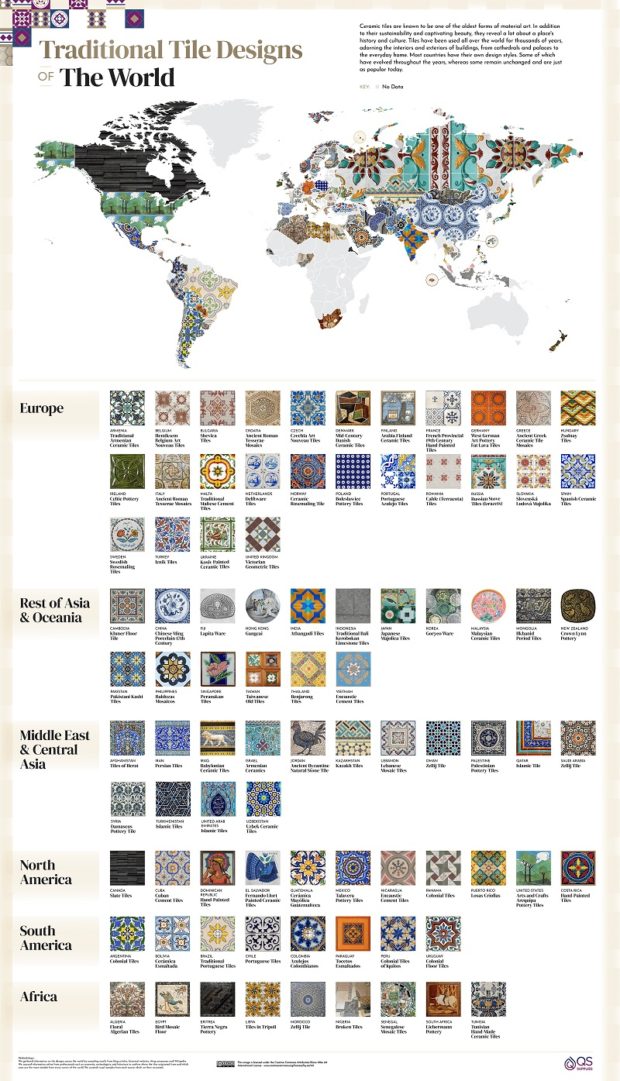
Let’s take a closer look at these beautiful designs.
The tiles of Europe
Ceramic tiles fell out of fashion across Europe following the collapse of the Roman Empire. The continent didn’t start producing tiling again until the second half of the 12th century.
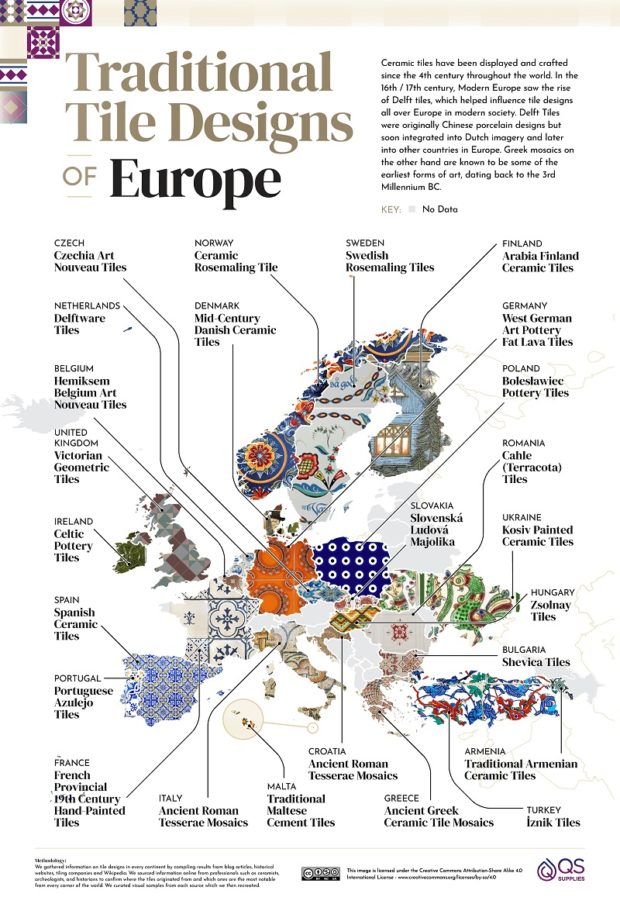
European artisans prefered working with ceramic because it could be locally sourced and produced. The material was also easier to work with, allowing craftspeople to create a wide range of signature styles and designs.
North American tiles
North America didn’t start producing its own tiles until late into the 19th century. Until then, most tiles were imported from Europe and South America.
When North Americans began crafting tiles, they opted for a no-frills, functional style. The Canadian Slate Tiles are simple, sturdy, and durable.

South American
Flamboyant, eye-catching, and vibrant. These are just a few of the words that encapsulate the unique tiling aesthetic of the South American continent.
Heavily influenced by Azulejo, a form of Portuguese tin-glazed ceramic tilework, South American tiles burst with bright colors and mind-bending geometric patterns.
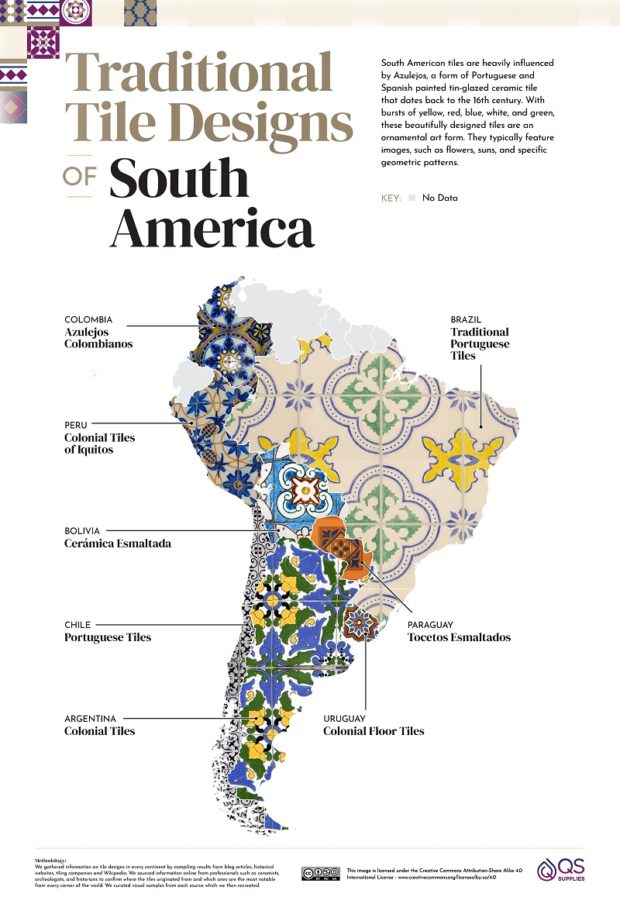
South American ceramic tiles are often adorned with images of flowers and suns, a nod to the ancient cultures that worshiped these natural phenomena as gods.
The Middle East and Central Asia
The glazed ceramic tiles of the Middle East added color and sophistication to the region’s mosques, shrines, palaces, and private houses.
The techniques to create the Herat-style tiles of Central Asia have been passed down through the generations. Many are still hand-crafted today, although cheaper, industrially produced Herat tiles are beginning to dominate the local markets. But it’s easy to tell the two apart. Machines cannot reproduce the same depth of color or fine detailing of a handcrafted Herat tile.
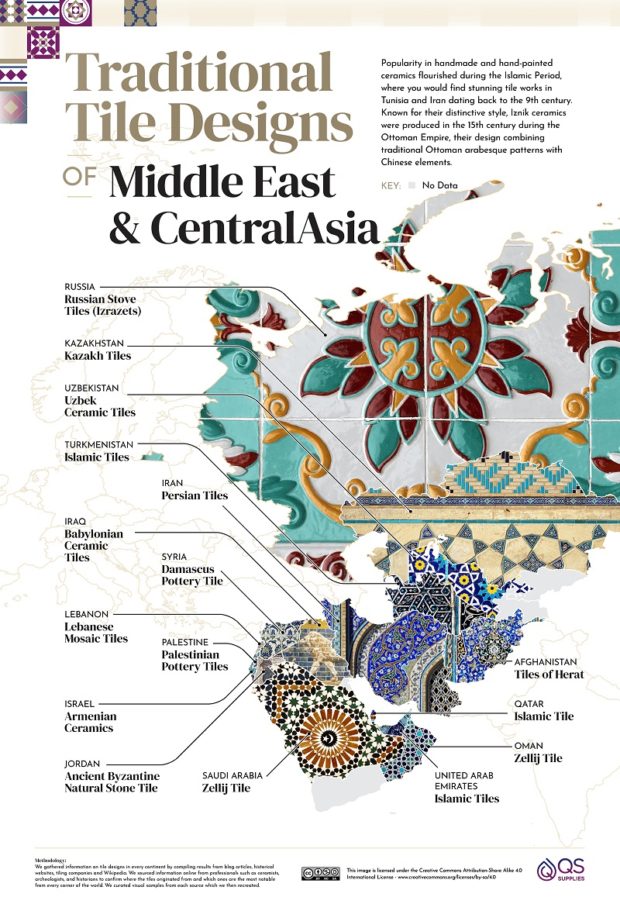
The rest of Asia and Oceania
Chinese tiling is defined by the Fenshui technique. Developed during the Ming Dynasty, Fenshui uses different shades of blue pigment to create an ink painting effect. Each tile often depicts a story relating to China’s mythical past.
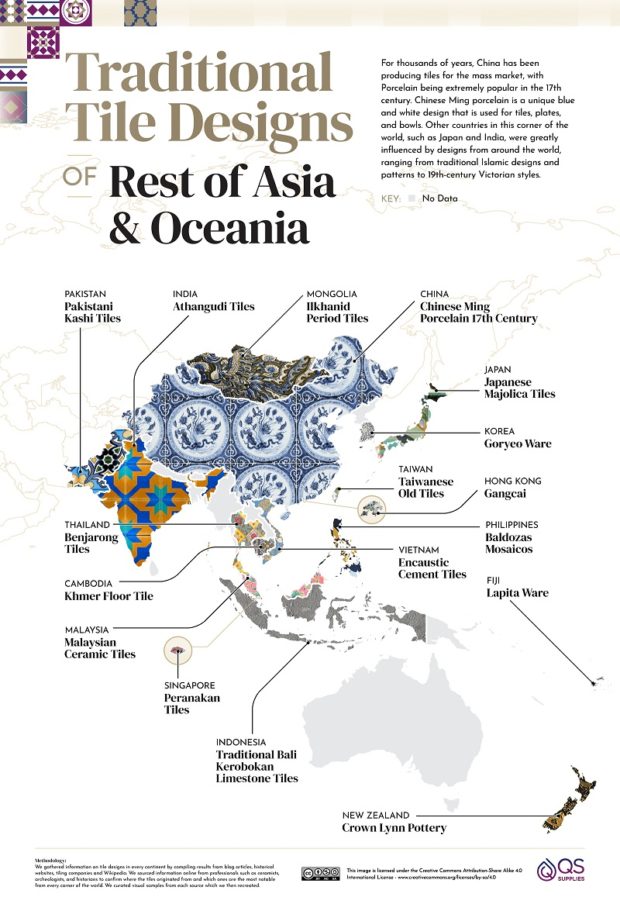
In Japan, ceramicists blended traditional English Victorian styles with eastern and Hindu iconography to create the Majolica aesthetic. It became in vogue across Japan and much of India, where the middle and upper classes wanted alternatives to the colonial-style ceramics imported from Britain.
African ceramics
First discovered near the ancient port city of Alexandria, Egypt’s exquisite bird-themed tile ceramics are thought to be over 2,000 years old. You can see some of the originals in many of the world’s greatest museums.
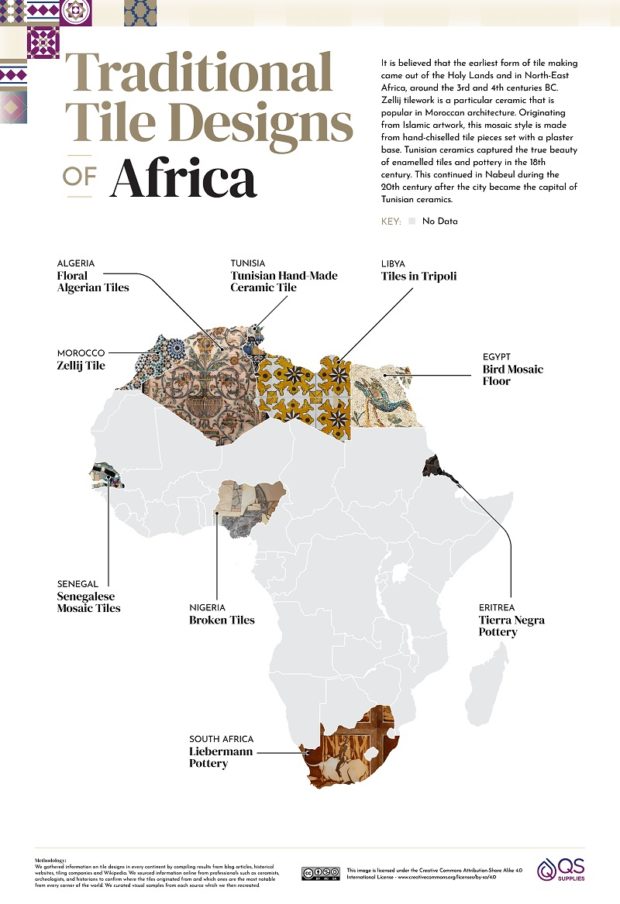
Modern versions adorn the homes of Eygpt’s wealthiest families, making these beautifully crafted designs a status symbol across North Africa.
Use the table below to scroll through all the world’s most beautiful ceramic tile designs.
The post Ceramic tile designs from all around the world appeared first on YourAmazingPlaces.com.
from YourAmazingPlaces.com https://ift.tt/107cSb6








0 comments:
Post a Comment